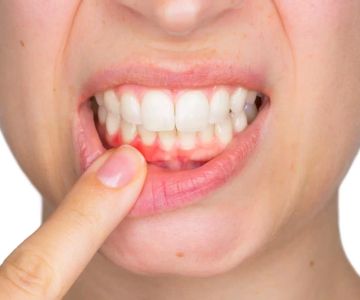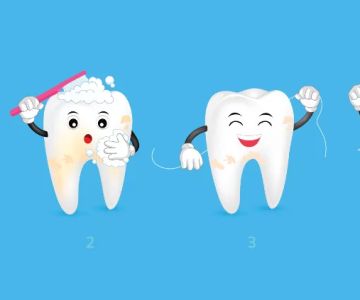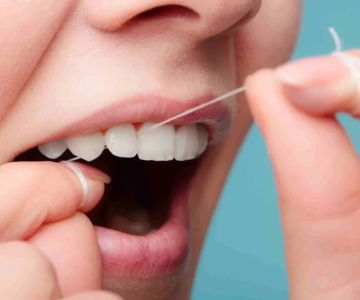How to Spot Gum Disease Early: Signs and Prevention Tips
- 1. Understanding Gum Disease
- 2. Early Signs of Gum Disease
- 3. Causes of Gum Disease
- 4. How to Treat Gum Disease Early
- 5. Preventing Gum Disease
1. Understanding Gum Disease
Gum disease, also known as periodontal disease, is a serious condition that affects the tissues surrounding and supporting your teeth. Early detection and treatment are key to preventing long-term damage, including tooth loss. Gum disease progresses in stages, from gingivitis (early stage) to periodontitis (advanced stage). By learning how to spot gum disease early, you can take the necessary steps to protect your oral health and maintain a beautiful smile.
2. Early Signs of Gum Disease
It’s crucial to recognize the early signs of gum disease, as early intervention can prevent severe damage. Some common early signs include:
- Gum Bleeding: One of the first signs of gum disease is bleeding gums, especially when brushing or flossing. If you notice blood on your toothbrush or dental floss, it’s a warning sign that you should not ignore.
- Swollen or Red Gums: Healthy gums should be firm and pale pink. If your gums are swollen, red, or inflamed, it’s likely a sign of gingivitis, the earliest stage of gum disease.
- Persistent Bad Breath: Bad breath that doesn’t go away, even after brushing, can indicate a bacterial infection in your gums.
- Receding Gums: If your gums are starting to pull away from your teeth, exposing more of the tooth or its root, this is a clear sign of gum disease.
If you notice any of these symptoms, it's important to consult a dentist as soon as possible to prevent the condition from worsening.
3. Causes of Gum Disease
Gum disease is caused by the buildup of plaque and tartar on your teeth, which harbors bacteria. These bacteria can lead to inflammation and infection of the gums. Some common causes of gum disease include:
- Poor Oral Hygiene: Failing to brush and floss regularly allows plaque to accumulate and irritate the gum tissue.
- Tobacco Use: Smoking and chewing tobacco increase the risk of gum disease by impairing blood flow to the gums and promoting plaque buildup.
- Genetics: Some individuals are more genetically predisposed to gum disease, regardless of their oral hygiene habits.
- Health Conditions: Conditions like diabetes, cardiovascular disease, and certain medications can contribute to an increased risk of gum disease.
- Age: As you age, your risk of gum disease increases, especially if you have neglected oral hygiene in the past.
Understanding these causes can help you take preventive measures and seek timely treatment if necessary.
4. How to Treat Gum Disease Early
If gum disease is caught early, treatment options are relatively simple and effective. Here’s how to treat gum disease early:
- Professional Cleaning: Your dentist or hygienist can perform a thorough cleaning to remove plaque and tartar buildup, helping to reverse early-stage gum disease.
- Improved Oral Hygiene: Brushing at least twice a day, flossing daily, and using an antibacterial mouthwash can significantly reduce plaque buildup and bacteria in your mouth.
- Prescription Treatments: In some cases, your dentist may prescribe antibiotics to treat any bacterial infection in the gums and prevent further progression.
- Scaling and Root Planing: If gum disease has progressed beyond gingivitis, your dentist may recommend a deep cleaning treatment called scaling and root planing to remove tartar from below the gum line and smooth the tooth roots.
The earlier you detect gum disease, the easier and more effective treatment will be. Regular dental visits are crucial for maintaining healthy gums.
5. Preventing Gum Disease
Preventing gum disease is easier than treating it. By adopting good oral hygiene practices and making healthy lifestyle choices, you can significantly reduce your risk. Here are some preventive steps:
- Brush and Floss Daily: Brush your teeth at least twice a day using fluoride toothpaste and floss once daily to remove food particles and plaque.
- Regular Dental Checkups: Schedule regular visits to your dentist for professional cleanings and checkups. These appointments are vital for early detection of any oral health issues.
- Avoid Tobacco: Quit smoking and avoid chewing tobacco to lower your risk of gum disease and other oral health problems.
- Eat a Healthy Diet: Eating a balanced diet rich in vitamins and minerals, particularly vitamin C, helps support gum health and fight infection.
By following these preventive measures, you can keep your gums healthy and avoid the discomfort and potential damage caused by gum disease.
If you’re concerned about gum disease or want to take proactive steps to protect your oral health, visit Dentistry Toothtruth for expert advice, tips, and dental products that can help you maintain healthy gums.







 Westgate Dental Arts3.0 (2 review)
Westgate Dental Arts3.0 (2 review) Coventry Family Dental4.0 (247 review)
Coventry Family Dental4.0 (247 review) Familia Dental3.0 (1028 review)
Familia Dental3.0 (1028 review) Dr. Daniel S. Fife, DDS4.0 (31 review)
Dr. Daniel S. Fife, DDS4.0 (31 review) Dentistry At Suburban Square: Michael I. Wollock, DMD4.0 (1228 review)
Dentistry At Suburban Square: Michael I. Wollock, DMD4.0 (1228 review) Comfort Care Dental4.0 (1156 review)
Comfort Care Dental4.0 (1156 review) The Importance of Oral Health Education During Pregnancy for a Healthy Pregnancy
The Importance of Oral Health Education During Pregnancy for a Healthy Pregnancy Why Skipping Dental Checkups Can Lead to Bigger Oral Health Problems
Why Skipping Dental Checkups Can Lead to Bigger Oral Health Problems Best Tips for Brushing Your Teeth Properly for Healthy Gums: Essential Techniques for Oral Health
Best Tips for Brushing Your Teeth Properly for Healthy Gums: Essential Techniques for Oral Health Advantages of Porcelain Dental Restorations
Advantages of Porcelain Dental Restorations How Can Diabetes Cause Tooth and Gum Problems? Preventing and Managing Oral Health Issues
How Can Diabetes Cause Tooth and Gum Problems? Preventing and Managing Oral Health Issues Healthy Habits for Promoting Good Oral Health and Hygiene: Tips for a Healthy Smile
Healthy Habits for Promoting Good Oral Health and Hygiene: Tips for a Healthy Smile